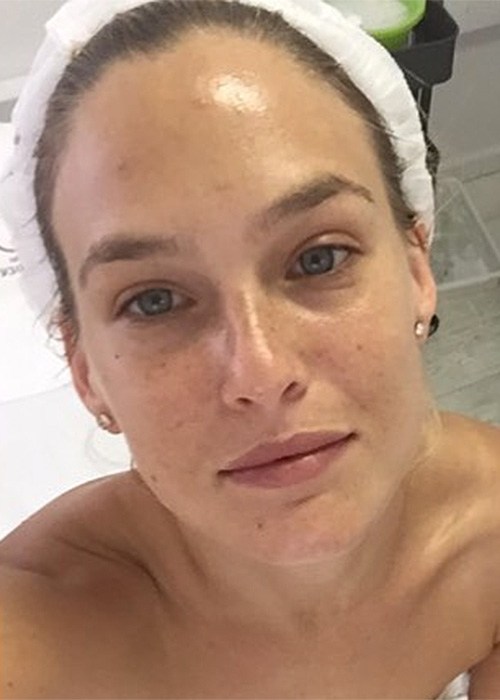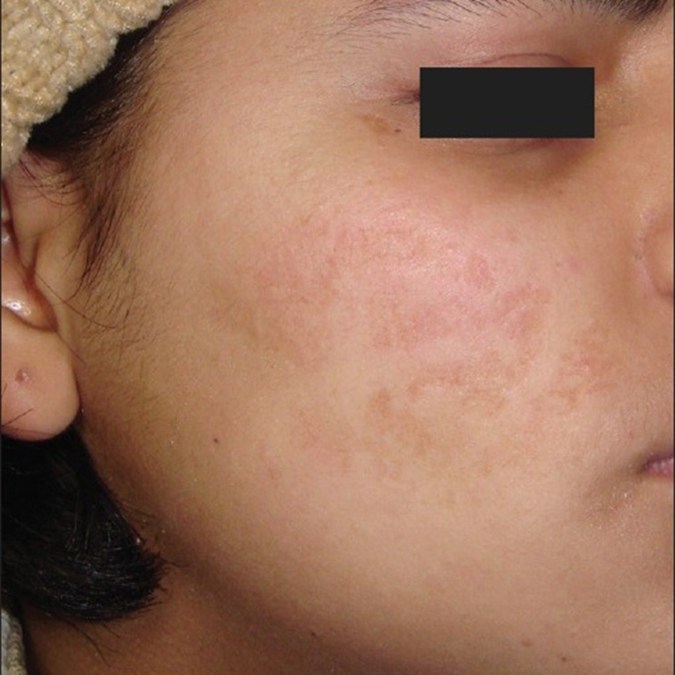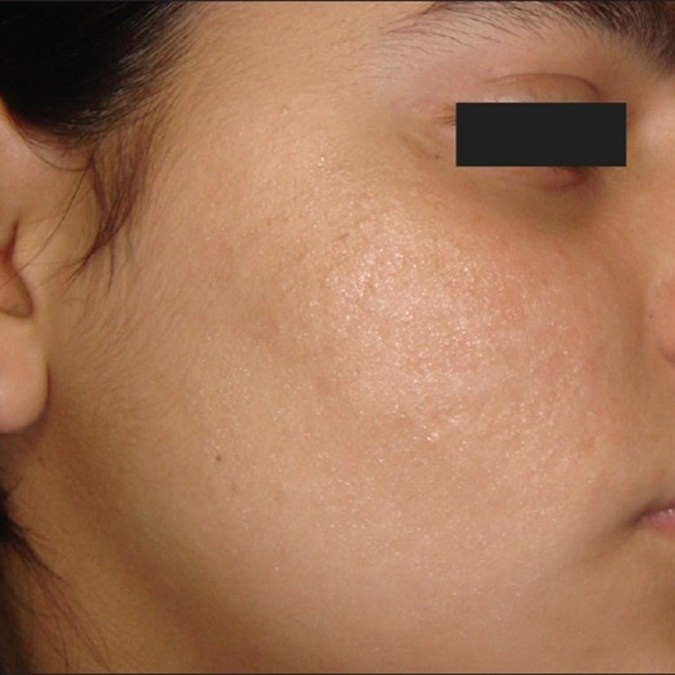Why you shouldn’t be afraid of microneedling

Pricking your face with needles? It’s SO worth it
Cosmetic procedures aren’t as taboo as they used to be – mostly because so many are now non-invasive, require no downtime and deliver such impressive results that it’s hard to find a reason not to try them. Microneedling is one such treatment.
If you haven’t heard of microneedling, perhaps you know it by another name — skin needling, face needling — it's all the same thing. You can even do microneedling at home with the help of a dermaroller.
But what’s all the hype about? Oh, just you get ready. Bear with us though — microneedling may seem a little intimidating at first, but it’s really not.
What is microneedling?
Microneedling is a procedure that uses tiny needles to puncture the skin. We know, we’re not fans of needles either. But… we’re talking about needles so fine you’ll barely feel a thing (plus, there’s numbing cream involved). And, more importantly, how good your skin looks afterwards is worth every single prick. Promise.
Microneedling treatments either use a dermaroller — which is like a handheld paint roller with tiny needles around the roller head’s circumference (note: the ones used by professionals differ from the ones you can use at home, but more on that later) – or a Dermapen, which is the more advanced technology and is most widely used because it’s less painful and requires even less downtime. A Dermapen uses the same needle-pricking principal as a dermaroller, but rather than using a rolling action, it moves the needles in and out of skin at a rate of about 1000 times per second. It also uses a vertical delivery system of needles, which allows it to treat hard-to-reach places like around the eyes, nose and lips.
But why would you want to prick your skin with needles? For two reasons: Firstly, the pinpricks create mini ‘injuries’ on the skin, which cause your body to kickstart the skin’s healing mode. According to a report published by Clinical, Cosmetic and Investigational Dermatology, “This sequentially leads to the generation of growth factors which stimulate the production of collagen and elastin in the papillary layer of the dermis”. Hello, plumper skin. Secondly, those ‘holes’ made by the needles create micro-channels that allow your skin care formulas to absorb into the skin more effectively and penetrate more deeply. Read: your skin care works better, faster.
What's the difference between microneedling and RF microneedling?
So we now know the ins and outs of microneedling, but how do the two little letters ‘RF’ change the microneedling game? Well firstly, in case you’re curious the RF stands for radio frequency, which works to control heat deeper in your skin tissue, giving you a skin-tightening collagen boost.
So aside from radio frequency what’s the actual difference between these two needles? Basically, microneedles work to create channels for skin care to hit deeper safely, giving you more stand out skin-tightening results.
Skin needling results
Microneedling is no one-trick pony. “Skin needling produces similar results to dermabrasion, lasers and deep chemical peels, but is much less invasive and does not require the removal of the epidermis,” says Natalie Abouchar, Registered Nurse and founder of Privée Clinic.
As you might have guessed, since skin needling stimulates the production of collagen, it subsequently helps reduce the appearance of wrinkles and fine lines (pores, too), as well as improves skin sagging.
Then there’s its ability to heal skin, which can fade scars (we’re talking superficial ones, not deep ones unfortunately). Acne scarring will benefit from microneedling, as will your overall skin texture. Got stretch marks? Yep, it will help fix them up, too. As for cellulite, well, the jury’s still out.
What happens in your appointment
At the start of a microneedling treatment, a numbing cream is applied to the skin. This reduces the pain felt, although you will still experience some mild discomfort. Don’t worry, it’s definitely tolerable.
Next, the practitioner will work a Dermapen over the face to pierce tiny holes in the skin’s surface. The needles used are so fine and they only puncture the outermost layers of skin, so bleeding is rare (but completely fine, should it occur). It only takes about 30 minutes to micro-needle the whole face.
Does microneedling work?
According to a study published in the Journal of Cutaneous and Aesthetic Surgery, it sure does. At least in regards to treating facial scarring, which is what their research focused on. Out of the 36 patients whose results were analysed over a maximum of four microneedling treatments, 34 achieved a reduction in the severity of their scarring by one or two grades. “More than 80 per cent of patients assessed their treatment as ‘excellent’ on a 10-point scale. No significant adverse effects were noted in any patient,” reported the study.
This before-and-after is of one of the study’s participants:

Before

After
As for microneedling’s anti-ageing perks and ability to make skin look better and brighter in general? Any reputable skin clinic who performs skin needling will gladly share with you their customer reviews and microneedling before and after shots to reveal how impressive the results can be for a variety of skin concerns.
How long do the results last?
“How long results will last depends on many factors including sun exposure, general health and diet,” explains Abouchar. In general, it will take about six to eight weeks for the visible signs of skin rejuvenation to be seen, but the results can last as long as a year! “Each treatment is building collagen, so the results are cumulative and the more treatments undertaken, the better the results,” adds Abouchar.
Are there any skin needling side effects?
That’s another thing to love about this treatment: Overall, the micro needling side effects are very minimal. And, “skin needling is also one of the few skin therapies that are suitable for treating all skin types,” says Abouchar. Yes, even dark skin tones and Asian complexions who have to tread with caution when it comes to other procedures like laser skin resurfacing.
Post-treatment, you will very likely experience redness, similar to moderate sunburn, says Abouchar. But this usually subsides within 24 hours. “You will also experience skin tightness and mild sensitivity to touch. This will diminish greatly after a few hours following treatments and within the next 48 hours your skin will be completely healed.” You may feel like going makeup-free for a while after your treatment – a) because it will give your skin a chance to breathe and heal, and reduces the risk of irritation if your skin is feeling a little sensitive, and b) once the benefits of microneedling kick in, your skin will look all glowy and bright that you won’t want to hide under a veil of foundation.
Also, steer clear of active skin care formulas (especially ingredients such as AHAs and retinol) for a few days after the treatment. Ask your practitioner for advice specific to your skin.
How much does skin needling cost?
The cost of microneedling varies greatly throughout Australia, starting from about $300 up to $600 per treatment to the face. Microneedling can be applied all over the body, and the price varies accordingly. “Depending on the skin concern being treated, a course of three to six treatments is recommended, four to six weeks apart,” says Abouchar. “However, after even one microneedling treatment, the skin should feel smoother, more hydrated and have improved texture.”
Is there an at-home DIY version?
You bet! There are at-home dermarollers you can buy. Their needles aren’t as long as those used by professionals (or those used in a Dermapen), but they still work in the same way to stimulate the skin and help products penetrate deeper. And because of the smaller needles (less than 1mm in length), you won’t experience any pain or as much redness. But, just be aware that there is no scientific proof yet whether or not these types of dermarollers work.
Main image credit: @barrafaeli
Inset images: @australianskinclinics; Journal of Cutaneous and Aesthetic Surgery

Chelsea is BEAUTYcrew’s Contributing Editor. She has a sweet spot for anything that claims to make skin glow and won’t leave the house without a slick of mascara. Chelsea has 10 years of experience as a beauty editor and her words can be found on BEAUTYcrew, Women’s Health, Daily Addict, The Joye and Primped.







